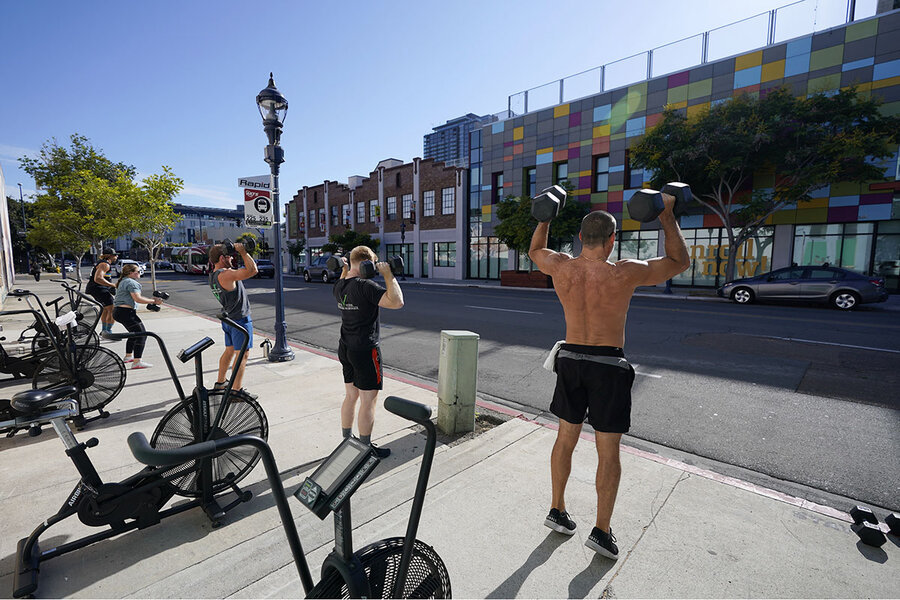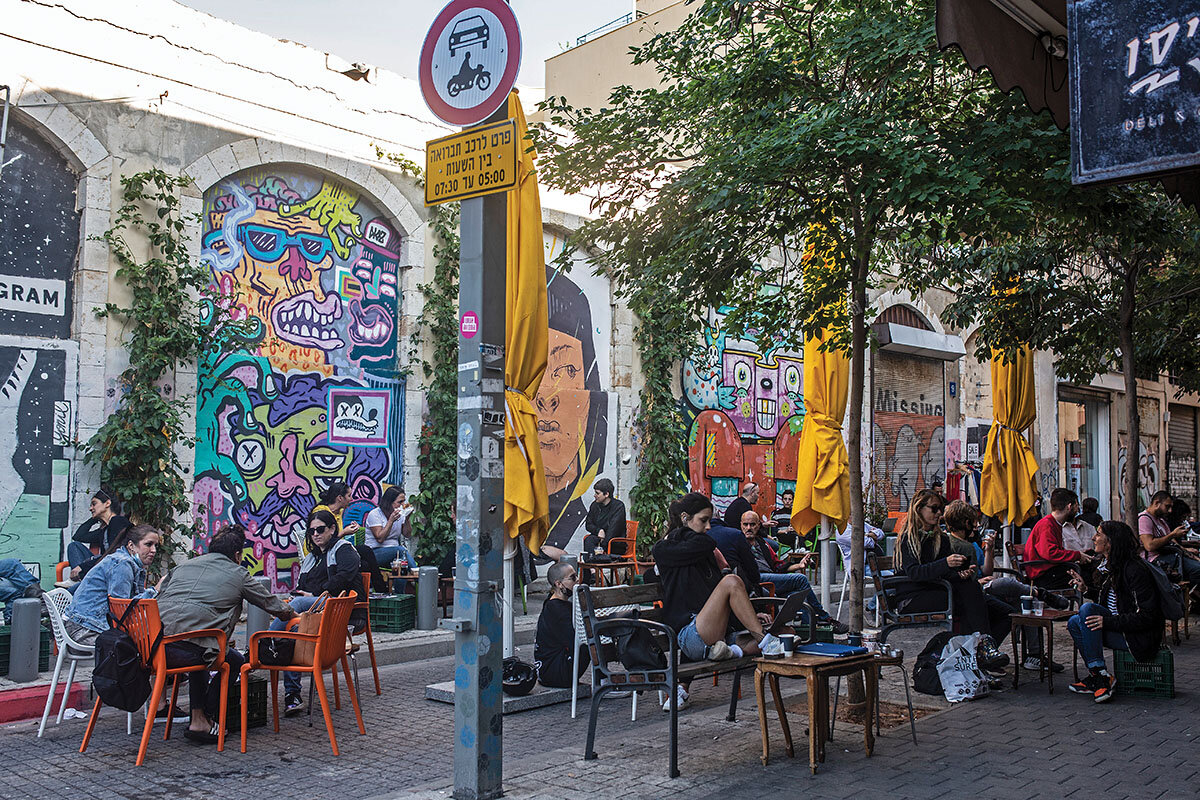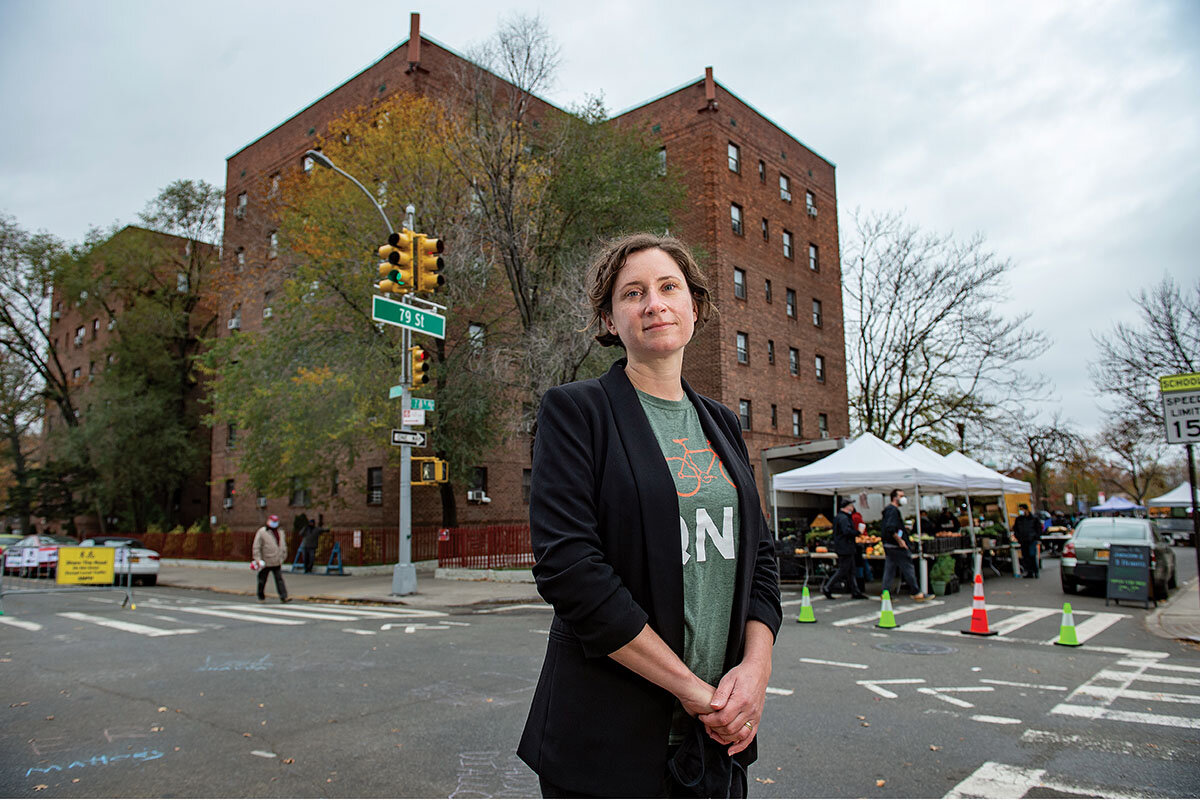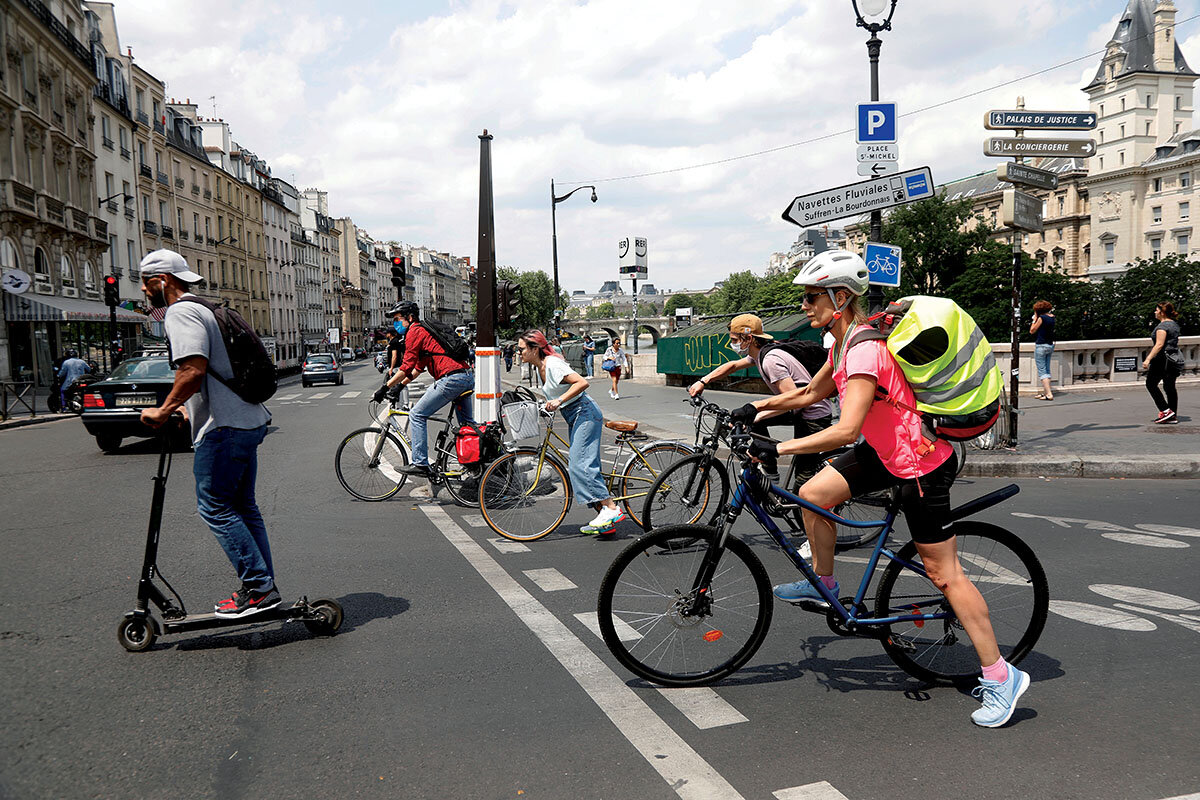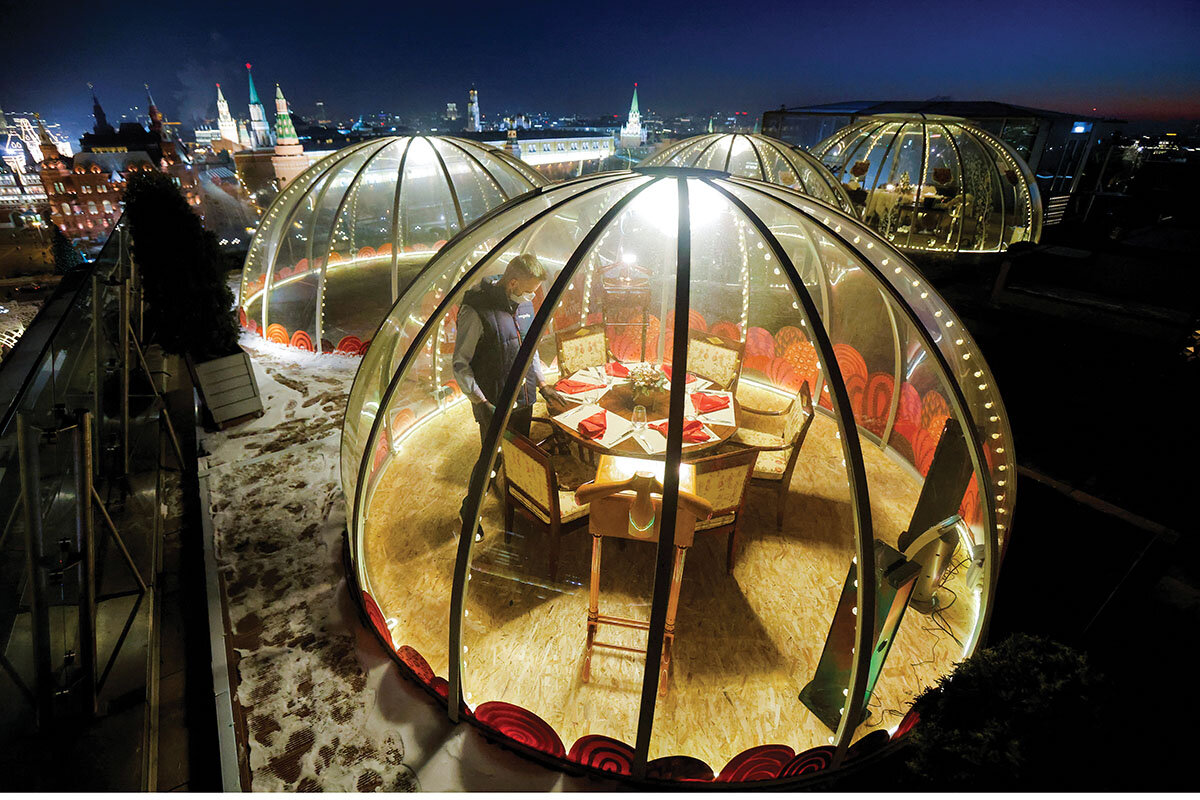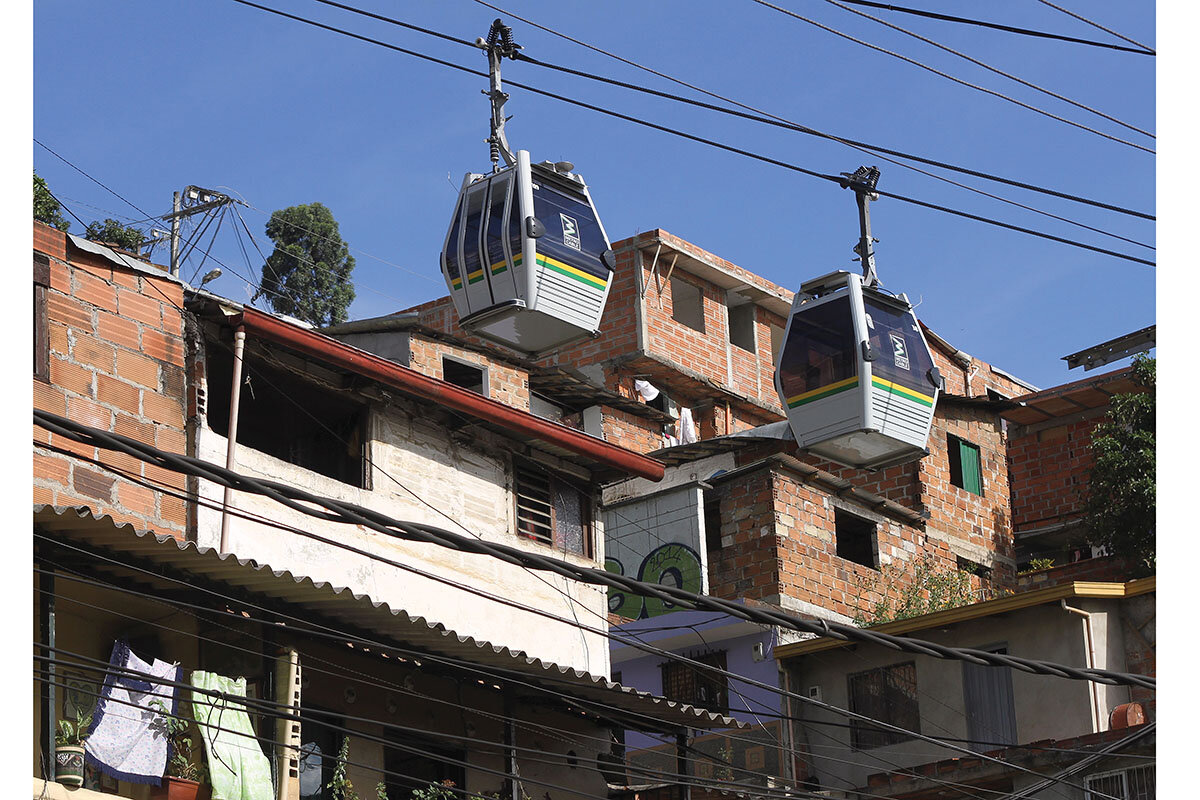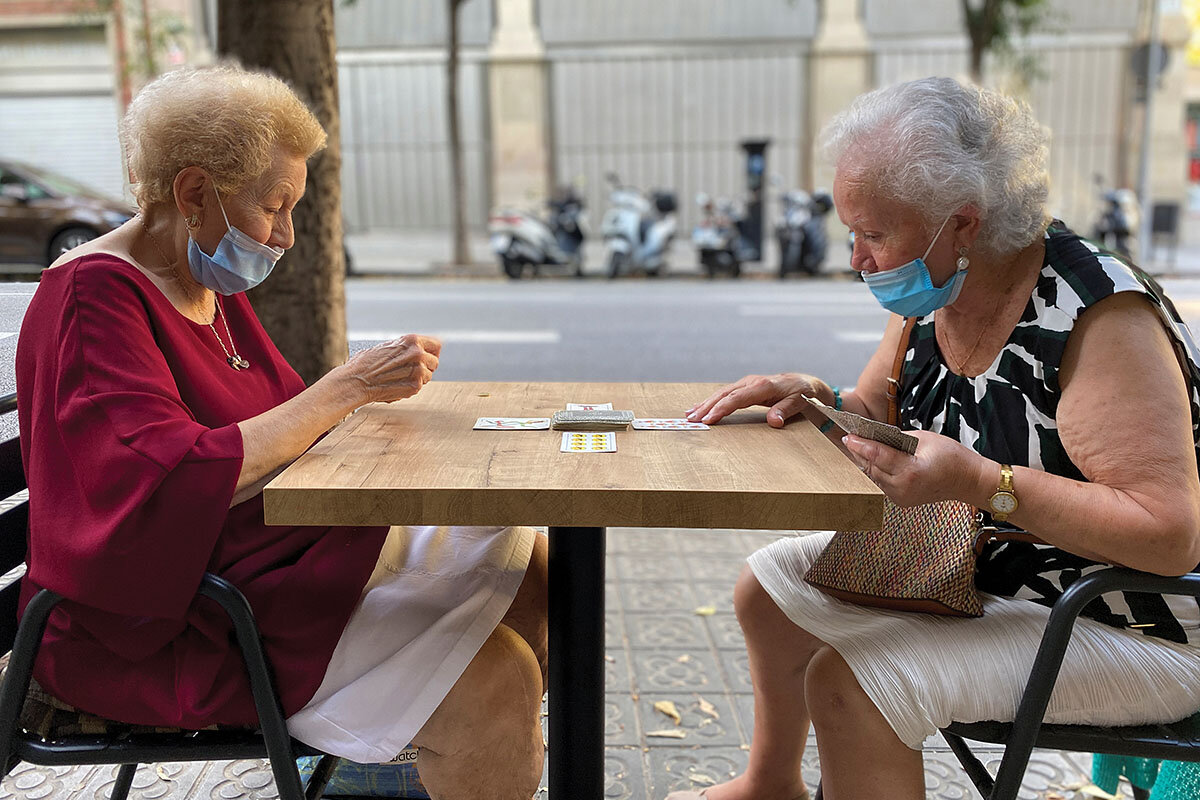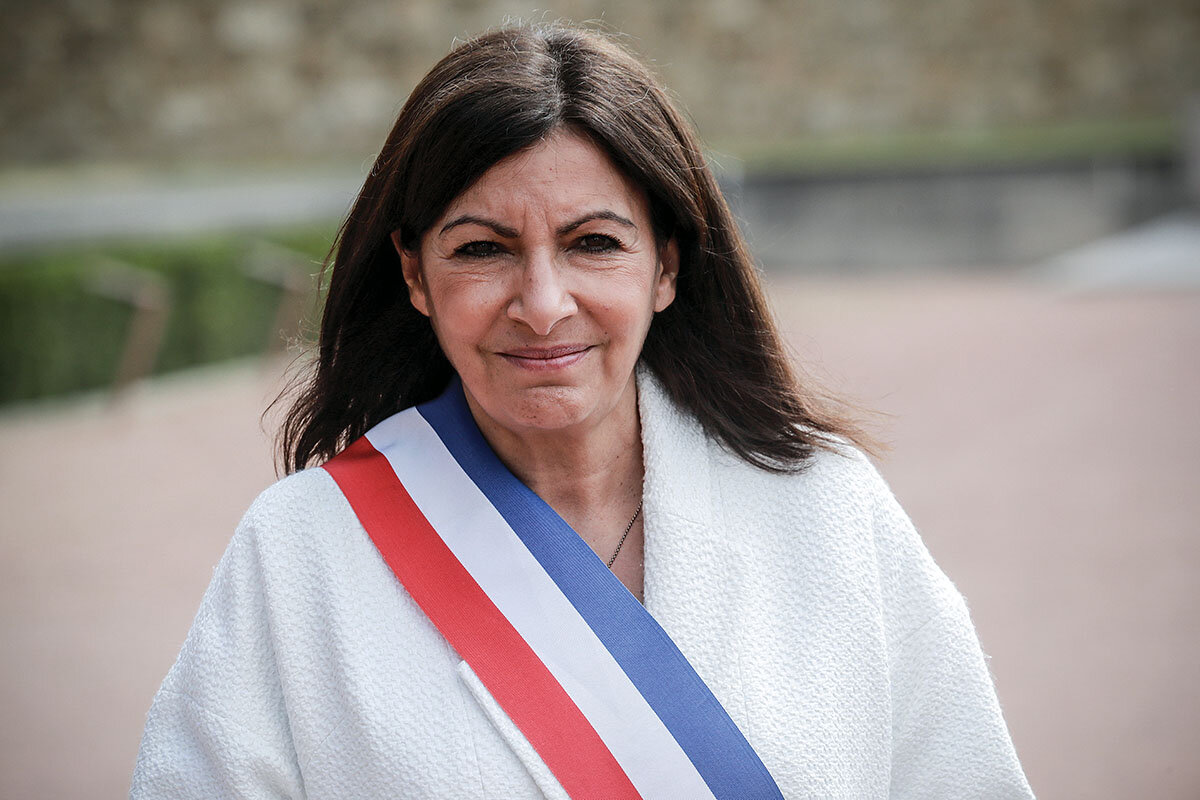Pandemic opportunity? Pumping new life into cities.
Loading...
| Tel Aviv, Israel; Toronto; Basel, Switzerland; and Mexico City
In Tel Aviv’s Florentine neighborhood, young people snack on bourekas and paninis as they relax at cafe tables placed at prudent social distances, occupying the same asphalt where cars once sped by or created clouds of exhaust in their search for parking. Blocking vehicles from the road are gray metal bollards that now stand as inanimate guards.
In Paris, 31 miles of “coronavirus cycling lanes” have been introduced since COVID-19 hit, designed to relieve pressure on public transport as the city exited lockdown. Mayor Anne Hidalgo promises that the bike lanes will become permanent.
In Oakland, California, officials have launched a “slow streets” initiative that has designated 21 miles of urban roadway for residents to use for safe-distancing as they walk, jog, and use wheelchairs, as well as bike.
Why We Wrote This
Cities throughout history have survived wars and plagues and often come through them stronger. Now some believe the pandemic will yield innovations that will make streets more user-friendly for residents and give neighborhoods a greater voice in planning.
From Boston and Barcelona to Bogotá and Seoul, cities around the world have responded to the pandemic with an accelerated “taking back” of streets from cars and returning them to pedestrians and cyclists. Although some of these moves were declared to be temporary, they have faced little pushback, and the sense is that once the world’s cities reemerge from a new wave of pandemic lockdowns, many of the changes will be here to stay – forever altering urban landscapes and lifestyles.
Urban planners are exploring other innovations, too, that are more unconventional and far-reaching. Seizing on the moment to redesign how people use space, they are looking at such things as turning suddenly empty office buildings into badly needed residential spaces; rezoning so that work, leisure, and school can be within easy reach, creating self-contained neighborhoods that are their own “15-minute cities”; and reimagining park space to link long-isolated neighborhoods.
Some of these innovations are already changing people’s lives. In New York City, where 100 miles of road were made into open streets for pedestrians and cyclists to use, Alexandra Nye is reveling in her walks and bike commutes down 34th Avenue in her Queens neighborhood.
“This neighborhood has only one proper park, and for how densely populated we were, we were always on top of each other,” says Ms. Nye, a librarian. “But now I see kids learning how to ride bikes, people doing Zumba, yoga, and I’ve even seen a book club meet on the street.”
Yet as cities continue to change in response to the virus, many people are worried that the new initiatives could benefit some residents over others, exacerbating social and economic inequalities. Questions swirl, for instance, about which populations will be served by the new bike lanes, pedestrian areas, and space for sidewalk cafes – the affluent or low-income?
But here, too, the pandemic is leading to changes that could ease divides. In Oakland, for example, city officials and local residents are launching an initiative in predominantly Black and Latino neighborhoods called “essential places.” By slowing or diverting cars with cones and signs, it aims to help pedestrians in those communities safely reach places such as grocery stores and health clinics that are located along heavily trafficked roadways.
Throughout history cities have survived wars, natural disasters, and plagues and often come through better at the end of them. Now, planners say, the pandemic offers an opportunity for urban areas around the world to reinvent themselves in a way that transforms both the sociology and livability of cities.
“I say start taking cities back from cars, start developing a new set of expectations,” says Elihu Rubin, a professor of urbanism at Yale University’s School of Architecture in New Haven, Connecticut. “This is the power the built environment has to shape our expectations. It can be a driver of racism and segregation, but it can also be our savior as it begins to suggest new modes of urban living.”
“COVID has woken everyone up”
Donte Gibbs, a community activist from East Cleveland, a majority Black city that is one of Ohio’s poorest, is encouraged by the conversations he is taking part in.
“It’s overwhelming, and so much is happening at once, and light is being shined on all the inequity,” he says.
Mr. Gibbs is already beginning to see results, including cheaper bus fares, free Wi-Fi on buses, and the fast-tracking of funding for community philanthropic projects. He attributes all of them to the pandemic.
That’s because COVID-19 has laid bare that systemic inequalities in cities are not just immoral, but unhealthy for individuals and broader society, says Dr. Rubin.
Deborah Gray agrees. The retired secretary spends much of her time at City Council meetings and public bus hearings advocating for residents from her mostly Black neighborhood in Cleveland, where she sees up close the impact of rising unemployment, shabby housing, and the threat of evictions.
“The urban community has to be treated equally and get the financial help needed to rebuild our areas, to make these areas as comfortable as anywhere else,” says Ms. Gray. As essential needs, she cites better-maintained housing, newer and better buses, and more bus routes to help local residents.
When people, she says, “don’t see investment, they think they don’t have a voice.”
Conversely, Ms. Gray says, when her neighbors see the added bike lanes and widened sidewalks in their neighborhood, and increased support for disadvantaged people through newly available telemedicine and social services online, it galvanizes them to care more, too.
“COVID has woken everyone up,” she says. “It’s a call for everyone to move forward and figure out how we can work together and make it better for everyone – those in the urban community and those who are comfortable.”
Make way for bikes
Toronto, Canada’s largest city, has an extensive public transit system, but people here still love their cars. Megahighways feed into the city; multilane roads traverse it.
Advocates for safer streets for pedestrians and bicyclists have long fought for more space. But it took the pandemic to get officials to summon the political will to back them. Within weeks of the coronavirus hitting last spring, Toronto’s City Council approved an additional 25 miles of bike lanes across the city.
One of the most popular bicycle routes on summer and fall weekends was Lakeshore Boulevard, which traces the southern edge of the city, along Lake Ontario. But to really transform habits and help enable safe transportation, Jennifer Keesmaat, the city’s former chief planner, says a network of bike routes must be created across the city, connecting the most marginalized neighborhoods to the most upscale ones, as well as to the main business and cultural centers.
“There’s been this perception that cycling is somehow this elite activity, and it’s actually not. It’s the most accessible and equitable way for people to move around the city, but only if you put the safe cycling infrastructure in place,” she says. “What I’m interested in is mobility everywhere to everywhere. ... This is the future of cities, not retreating back into planning for cars and designing cities for cars.”
In Paris, advocates credit the emergence of a biking network there with the increase and diversification of bike users. “We had bikeable stretches, but we didn’t have a network,” says Louis Belenfant, president of Vélo Île-de-France, a bicycle activist group. “In the span of a few weeks, we saw the emergence of biking lanes that are visible, safe, and separate from car traffic.”
But access remains uneven across the metropolitan area, particularly in the less affluent suburbs. Many say the way forward must include “tactical urbanism” – creating light, adjustable, and low-cost infrastructure (like bike lanes or pedestrian streets) to test what concepts work, rather than spending a massive amount of money and committing to something that can’t be adapted.
Such changes can often be done relatively quickly and cheaply and usually don’t involve extensive permitting.
“One of the major hindrances to really ambitious policies in cities until now has been politicians being worried about the backlash of doing anything against cars,” says Audrey de Nazelle, an expert at the Centre for Environmental Policy, Imperial College London.
Mayor Hidalgo, who was reelected in June, “has finally proven that really ambitious policies don’t necessarily mean that you get turned out by voters,” she says. “It pays off to be brave.”
Critics of the mayor argued that her anti-car policies were detrimental to suburban residents, but ultimately it was not an issue that gained huge traction. During her first term, Ms. Hidalgo added hundreds of miles of bicycle lanes to Paris, including along the iconic Champs-Élysées. The car lobby’s legal challenge against the pedestrianization of the Seine – another one of her projects – also ultimately failed.
In a sign of growing acceptance of getting around Paris by foot or on bike, the city declared a “car-free” day in September.
The promise of “slow streets”
Across the Atlantic, Latin America has historically been one of the most unequal regions in the world, and there are worries that economic progress made in recent decades could be wiped out because of the pandemic.
Yet in parts of the region, officials are taking steps to reclaim streets for residents as they are in other cities around the world. In Bogotá, Colombia, one of the world’s most congested cities, the urban planning response to COVID-19 has included adding temporary bike lanes, many of them taken from car lanes. That move has served as a reminder that “the streets and sidewalks are public space that belong to everyone,” says Guillermo Penalosa, a former commissioner of parks, sports, and recreation in Bogotá who now runs 8 80 Cities, a nongovernmental organization that encourages urban planning policies that benefit people of all ages.
“We gave up a huge part of our cities not even to moving cars, but prioritizing parked cars over people walking or sitting and chatting. That’s a big benefit of how cities are dealing with the crisis: They’re reclaiming public spaces.”
In many cases, the changes being implemented in cities aren’t all that radical. One example is the “slow streets” initiative in Oakland, California, part of a global movement in which city officials are setting aside streets for pedestrian-friendly uses.
Some of the innovations echo what happened in earlier eras, when cities were forced to adapt to crises. William Gilchrist, Oakland’s planning and building director, cites the introduction of closed sewage systems and green spaces such as New York City’s Central Park, which were created in response to the crowding of 19th-century cities and the diseases it helped spread.
But, he cautions, cities should not just institute reforms willy-nilly. He urges them to figure out what works – and fosters health and social equity.
One potential challenge to closing disparities among urban residents is that so many affluent people have decamped either temporarily or permanently to other locations. It’s the wealthier class that injects much of the capital and jobs, as well as philanthropic money, into local economies, which is more important than ever now that there is less largesse for government programs.
Driving this exodus is the population density that has been blamed for playing a role in the spread of COVID-19. But public health experts say density is not inherently problematic on its own, especially if mask wearing and social distancing are followed.
Similarly, mass transit systems have taken a major hit during the pandemic, as residents – many in lockdown, others worried about the dangers of crowding – have stopped taking buses, trains, and ferries. In some cases, public transit systems have been temporarily closed.
But here, too, many experts believe that the concerns are misplaced. They argue that public transportation systems, which are the only way for many residents to get around, are safe if proper precautions are taken.
Indeed, urban planners like Dr. Rubin believe that now is the time to take advantage of fewer commuters on the road to build the infrastructure needed to improve mass transit for urban residents. This might include seizing road space for dedicated bus lanes. It could mean putting in bus islands or raised sidewalks at bus stops.
Galvanizing the political will to pay for such changes, of course, will be a challenge – especially since many transit agencies are strapped for funds because of the drop in ridership.
But what is different now, some advocates say, is that the pandemic has reminded everyone how important public transportation is, especially to certain urban populations who rely on it to reach their jobs.
Rethinking neighborhoods
Longer term, the pandemic could accelerate a more fundamental reshaping of cities around the world. Paris, for example, has been exploring the concept of the “15-minute city” where everything is within quick reach by bicycle or on foot.
This means moving away from the traditional divide of cities into residential versus professional and commercial areas. Instead, there would be shops, job-providing businesses, housing, and schools all within a commute-free radius.
It was one of the ideas on which Mayor Hidalgo won reelection. In light of the push COVID-19 gave to the trend of remote working, the concept is gaining interest in other parts of the globe, including in Toronto.
“It is really about ... changing how we use land in cities, precisely because we learned through COVID-19 that our neighborhoods are really powerful and important places for everyday life when we design them right,” says Ms. Keesmaat, Toronto’s former city planner.
As city economies slow down because of the pandemic, there’s an opportunity to pivot to community-based planning and away from a dependence on private developers, some planners say. This can give neighborhoods more of a voice in articulating what cities should do with public spaces, parks, transit, and affordable housing.
In Oakland, Mr. Gilchrist, the planning director, is discussing how buildings can have a range of uses over time – like making commercial space into housing given the dynamic of remote work. He credits the city’s tradition of community-civic partnership in helping think creatively now.
The Colombian city of Medellín may hold some secrets for moving ahead after the pandemic. In the early 1990s, it was the most dangerous city in the world, essentially ruled by drug traffickers. Citizens had all but abandoned the idea of communal, public space.
But by 2003, people outside government, such as former academics and members of civil society, started working closely with the new mayor’s office. For the first time in decades it led to partnerships between the government, businesses, think tanks, and the public. Creative ideas surfaced on how to bring the city together.
Among the results were urban planning projects like cable cars integrated into the metro system to connect poor, forgotten neighborhoods with the rest of the city. Social projects went hand-in-hand with architecture and city planning.
Alejandro Echeverri, director of the center for urban and environmental studies at EAFIT University in Medellín, played a central role in the city’s revitalization.
And he sees promise in this crisis, too. “There will be a lot of space for opportunity,” he says.




